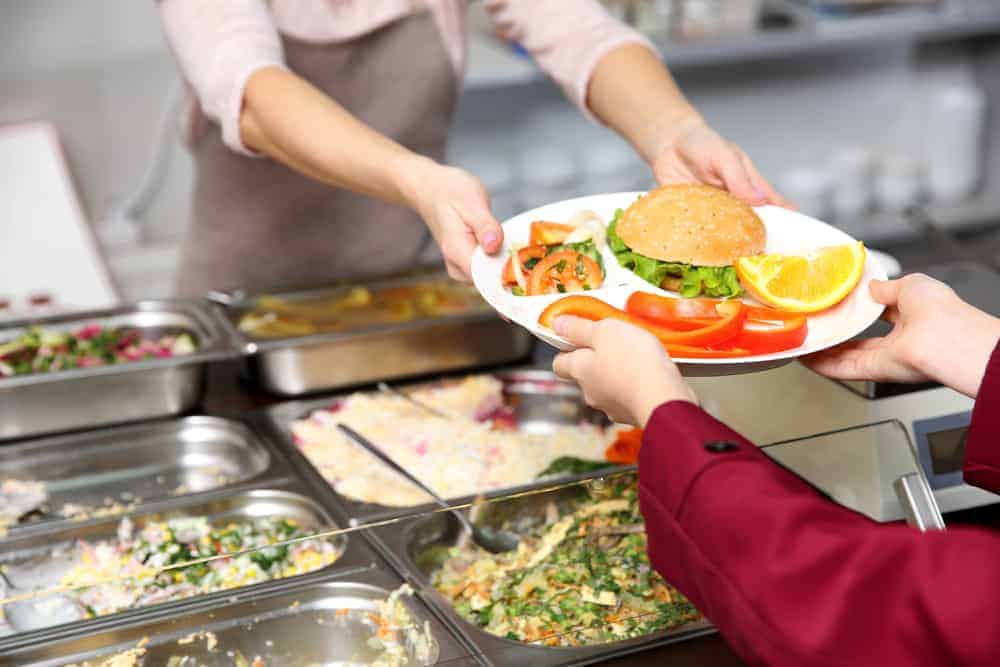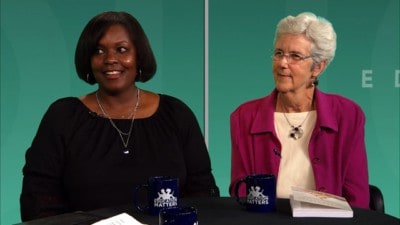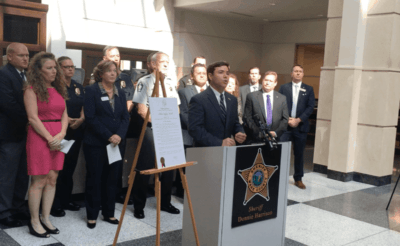Every student who walks through the lunch line in North Carolina is provided with food, regardless of ability to pay, but school systems still keep track of what students owe over time.
Depending on how districts handle this issue, this school lunch debt can become a burden. How the schools respond to that debt varies widely across the state. Sometimes outside donors step in to alleviate the problem, but at other times the debt falls on the school districts.
About 60% of students statewide participate in the National School Lunch Program and receive a free or reduced price meal, according to the N.C. Department of Public Instruction. Students without funds to cover whatever they do owe for lunch will receive a negative charge on their lunch account, which can be paid off later.
“Any child that comes to school, any day and any time, we are going to make sure that they receive food,” said Lauren Richards, director of child nutrition for Winston-Salem Forsyth County Schools.
“It’s never our intention to embarrass or belittle a child in the serving line.”
However, debt can quickly accumulate, and at the end of each fiscal year, unpaid lunch debt becomes the school’s responsibility, according to the Student Nutrition Association. For many school districts, this number can pose a significant financial burden.
Charlotte-Mecklenburg Schools had $388,937 owed by 10,600 students in the 2018-19 school year, up from $282,965 in 2017-18, according to Catherine Beam, executive director of student nutrition services.
Alamance-Burlington Schools had $56,146.63 owed in the 2018-19 school year. Pamela Bailey, executive director of child nutrition, said this amount is up $5,000 from the previous school year and she calculates it will likely increase by another $3,000 this year.
Big donors come through
Although the National School Lunch Program is federally funded, money to cover unpaid lunch debt must come from local donations, general education funds or any other nonfederal sources, according to the U.S. Department of Agriculture.
Recently, Guilford County Schools received three donations that together covered the total 2018-19 school year lunch debt for the entire district.
“We received three donations for around $45,000 in total,” said Angie Henry, chief financial officer for Guilford County Schools.
“Our first donor gave $10,500 to cover all the lunch debt in all the schools located in the city of High Point. We had another donor who donated over $3,000 to cover the lunch debt of all the schools located in Jamestown. Another anonymous donor donated the remaining amount, which was about $32,300.”
The year prior, a donation from Blue Cross Blue Shield covered the debt, as well as that at four other districts. The investment of $159,000 went to Alamance, Guilford, Forsyth, Rockingham and Davidson, according to a press release from May 2018.
These past two years have been an anomaly, Henry said, as most donations come from local businesses, civic organizations, churches or residents and usually focus on a certain school.
In 2014, Kristen Thompson-Riley founded Operation Wink, a campaign to raise money to cover student lunch debt for schools in the Mebane area and, as of 2017, it has helped pay for $9,707 worth of school lunches, according to The Times-News of Burlington.
A pair of sisters in Davidson county used a lemonade stand and additional fundraising to pay off more than $3,000 in lunch debt at Southwood Elementary School in Lexington this year, according to The Charlotte Observer.
“We had a mom at one of our high schools that went through and paid the debt for every senior. I think she ended up paying 600-something dollars,” Bailey said. “For everyone who was graduating, she covered that debt.”
Many schools have an “angel” account they can dip into to help cover a student’s negative charges, Henry said. It can help pay off charges from before a student’s free or reduced price application is approved or help students pay on a day they don’t have the money.
Schools and students left holding the bag
This assistance from donors is only a portion of the total of thousands of dollars of debt. The school’s budget must cover the rest, with funds it would otherwise use for student resources or operational costs, Henry said.
“At the end of the year, that’s definitely a burden on the educational budget because they have to find those funds and pull those funds from teacher supplies, instructional materials, any of those types of things to cover that,” Richards said.
Debt will often build up because parents either don’t fill out the free and reduced price lunch application early enough or forget that they must complete it yearly, Richards said.
“They may be eligible for the free or reduced price meals, but for the first five or 20 days of school, they haven’t returned the application,” Richards said.
“For those days, they are paying full price for meals, then they fill out the application, but the debt doesn’t go away.”
Students who qualified the year before get a 30-school day grace period during the fall to eat under that old status. But if at the end of the period, the parents haven’t reapplied, the students will begin to incur debt, Richards said.
Sometimes, families may be right above the threshold of qualifying and struggle to pay full price, Bailey said.
Food hardship severe in some areas
Reduced price lunch costs 40 cents a day, while full price lunch can cost anywhere from $2 to $3, depending on the district. For a school year’s worth of full price lunch, it can cost from $360 to $540, compared with just $72 for reduced price.
“Most of these parents aren’t deliberately not giving their kids money,” Bailey said. “You’ve got a lot of single parents right now, and it’s a struggle. You’ve got to decide, ‘Well, do I give my kids lunch money or do I keep the lights on?’”
Winston-Salem, as well as the Greensboro-High Point areas, struggles significantly with food hardship, according to a 2018 report by the Food Research and Action Center.
Out of 108 Metropolitan Statistical Areas represented in the survey, Winston-Salem ranked seventh-highest nationally with a rate of 20.2% food hardship. Greensboro-High Point ranked 14th with a rate of 19.2%. North Carolina is 17th in the country with an overall food hardship rate of 16.4%.
“We have such significant food deserts and have for years,” Henry said. “We just don’t see any improvement in it, and as our population grows and it’s more young families with children, I think it is impacting more people.”
Creative approaches to lunch charges
Each school district is required to come up with its own methods of collecting debt, ways of covering unpaid debt and reducing the overall amount, according to the USDA. This allows districts to tailor programs to their specific area.
For some, this includes implementing no-charge policies. Wake County schools has not incurred any student lunch debt for the past several years, said Lisa Luten, Wake County schools communications director.
“We do not allow students, families, anybody to go into debt; instead, what we do are a couple of things,” Luten said. “If a student does not have any money to pay for lunch or breakfast, we check other sources first. Other sources could be siblings’ accounts or accounts the school has available to them.
“If none of the accounts are available, then students receive a lunch or breakfast of fruits and vegetables. If that happens more than once, then the school intervenes by checking in with the parents to see if there are other issues that need to be addressed.”
Similarly, Alamance-Burlington Schools have a no-charge policy for the district’s high schools.
“They can charge up to five meals, and then the principals have them come to them, based on the report they are given at the end of the day,” Bailey said. “At the end of every day, our managers send the principals a charge balance with what each student owes.”
If a student has multiple outstanding charges the school reaches out the family for payment and to see if the student is eligible for free or reduced price lunch.
“School Nutrition notifies parents of the need to send money and of money owed from the school and central office levels multiple times, providing both information about the balance due and also how to complete a free/reduced meal application should they need assistance in paying for school meals,” Beam said.
“This is done through letters home, emails, personal phone calls and automated phone calls. Balance notification is an ongoing, all-year process.”
Bailey said the district tries to ensure as many families apply for free lunches as possible in order to reach all eligible students and offer as many avenues as possible for them to apply and pay the debt.
Several school districts cite the Community Eligibility Program as a helpful resource in reducing debt, as the program helps provide free lunch to 100% of students at qualifying schools. To qualify for CEP, a school must have a high percentage of students who already qualify for assistance programs such as the Supplemental Nutrition Assistance Program or Temporary Assistance for Needy Families.
Bailey said she wishes Congress would allow free lunch to be universal, eliminating the paperwork of free reduced meals, the financial burden debt places on schools and the stress involved for students.
“I just wish they would make lunch free all the way across the nation. It sounds kind of funny but it would make it so much easier on people,” Bailey said.
“Come on, let’s feed the kids and get them educated; they can’t learn if they are hungry.”
Editor’s note: This article was originally published by Carolina Public Press. It has been republished according to these guidelines.





